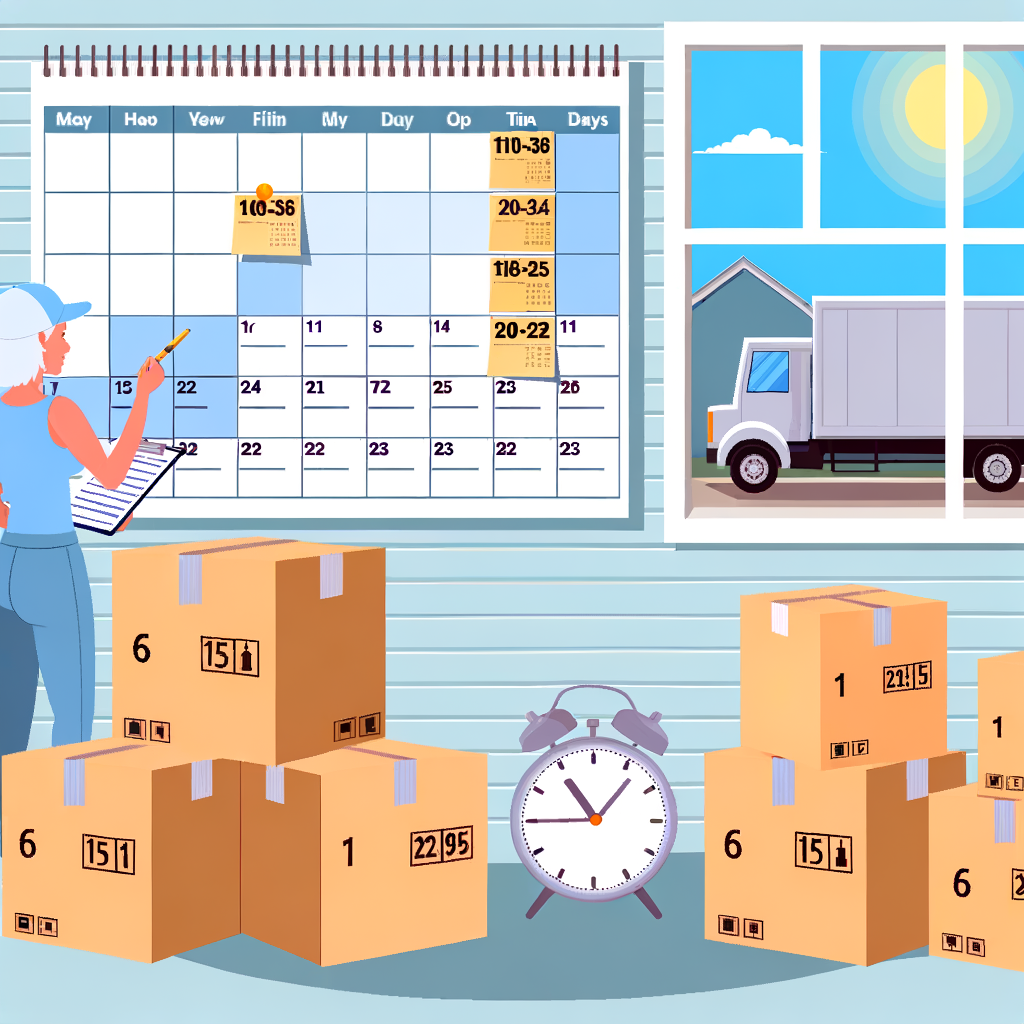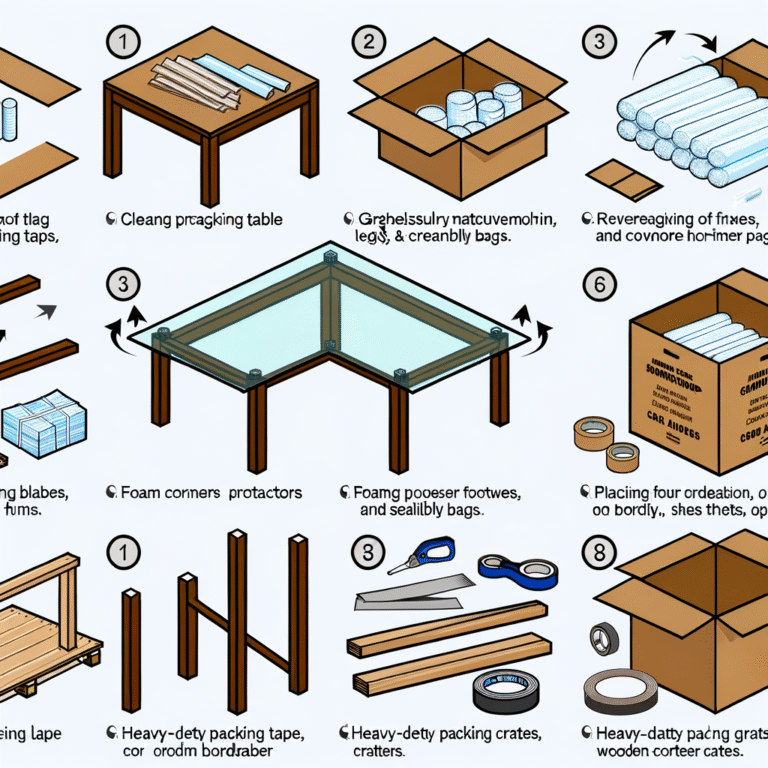Essential Timeline: When to Schedule Moving Services for Rental Transitions
Moving from one rental to another should be smooth in theory, but in reality, it can turn chaotic fast, especially if you don’t have your moving services scheduled with precision.
One missed deadline or late booking can spiral into lost deposits, overlapping leases, or living out of boxes for weeks. If you’re transitioning between rentals in 2025, timing is everything—and this timeline will show you exactly when to hit each moving milestone to avoid stress and save money.
Whether you’re ending a lease or starting a new one, coordinating moving services around rigid rental schedules and limited availability is no small feat.
With the high competition for professional movers, particularly at month-end or on weekends, proper planning isn’t just helpful; it’s necessary. This guide breaks down when and how to schedule moving services throughout your rental transition, ensuring you’re not just moving, but moving smart.
Understanding Rental Timelines
Before you plan the physical move, it’s crucial to understand your rental agreement’s timeline obligations. Most leases require a 30- to 60-day notice before termination, depending on state laws and contract terms. Missing this deadline can result in forfeiting your security deposit or inadvertently renewing your lease.
Adding to the challenge, lease end and start dates often don’t align perfectly. Renters frequently face a gap, like moving out on the 29th and not having access to the next property until the 1st. These overlap mismatches mean you’ll need to build flexibility or consider temporary solutions—more on that later.
Also, landlords often have specific move-out requirements: professional cleaning, carpet steaming, or walk-through inspections. Factor these into your moving service timeline since they can influence your official move-out date and what day movers should be scheduled.
8 Weeks Before Move-Out
The real key to a stress-free move? Starting early. At eight weeks out, confirm whether you’re ending or renewing your lease. If you’re moving, this is your window to establish a moving plan. Set a budget, outline packing goals, and identify key moving tasks.
Start researching professional movers now. Browse reviews, look at service offerings, and verify license and insurance status. As the American Moving & Storage Association puts it, “A reputable mover will take the time to walk you through the estimate process and answer your questions.” Early research helps you spot red flags and compare trustworthy providers before demand spikes.
6 Weeks Before Move-Out
With your shortlist of movers in hand, it’s time to request quotes. Be thorough and collect written or emailed estimates, not just phone numbers. Compare pricing, services included (like disassembly or packing supplies), and cancellation policies.
This time frame is especially critical if you’re moving during peak periods—end-of-month weekends or mid-year surges like May through August. Availability can dry up fast, leaving you scrambling. Start decluttering simultaneously. Sell, donate, or toss items you won’t take with you. Less clutter means fewer boxes, and fewer boxes can lower your moving costs.
4 Weeks Before Move-Out
Now it’s go time. Book your moving company as soon as you’ve made your decision. Waiting too long can mean your top choice is already booked. Ensure you get a written confirmation with all details: date, time, services included, and cancellation terms.
Notify your landlord of your official move-out day if it’s stipulated in your lease. This allows them to schedule inspections or prepare to re-rent the unit. Begin packing non-essentials—seasonal items, books, decor—so your workload isn’t overwhelming during crunch time.
2 Weeks Before Move-Out
With two weeks left, confirm the details of your move with your moving company. Recheck the arrival time, address, and services they’ll provide. Make any special requests known: fragile items, oversized furniture, or limited parking access.
If you live in an apartment or a building with shared amenities, reserve elevator slots, loading docks, or close parking if required. These logistical steps matter more than people think, and skipping them can lead to delays or rescheduling. Keep packing the essentials (but not daily-use items yet) and label every box by room for a quicker unpacking process.
1 Week Before Move-Out
Use this final week to tie up the last logistical pieces. Finish packing everything, using a master checklist so nothing gets forgotten. Put aside essentials like toiletries, documents, and a week’s worth of clothing in a separate, easy-to-access bag.
Settle any outstanding payments with your moving company and have all agreements printed or accessible on your phone. Schedule the final cleaning of your rental and arrange a walk-through with your landlord to ensure everything is in move-out ready condition, which directly impacts your security deposit return.
Moving Day
It’s here. Have your phone fully charged, paperwork ready, and cash or tip envelopes prepared if needed. When your movers arrive, walk them through the home, pointing out fragile boxes, stair access, and anything unusual. Don’t leave them unsupervised—you’ll want to verify that everything is handled with care and packed efficiently.
During unloading, direct movers where to place each box. Double-check all rooms before leaving to ensure nothing is left behind. Be proactive about preventing damage to the newly rented property—use felt pads, door stoppers, and rug runners to protect floors during furniture placement.
Post-Move Considerations
You’re in, but the job isn’t done. Contact utility companies to transfer or halt services, and update your address with USPS, your employer, and any subscription services. Don’t forget voter registration and DMV updates if you’ve switched zip codes.
Tackle post-move cleanup at your new spot—recycle boxes, organize essentials, and do a quick disinfect before settling in. If your old landlord hasn’t returned your deposit, follow up after the inspection and provide a forwarding address if needed.
Tips for Smooth Transitions Between Rentals
When rental dates don’t line up perfectly, flexibility can make or break your move. Prioritize working with movers who offer storage-in-transit options or short-term warehousing. This can bridge the gap between leases without having to move twice.
If you’re moving back-to-back between rentals in the same day, timing coordination is critical. Opt for morning slots with movers if possible, and have keys ready to both locations. Keep a folder of essential documents—leases, mover contacts, payment receipts—on hand in case any issues arise during the transition.
Common Mistakes to Avoid
Avoiding rookie mistakes can save time, money, and stress. One of the biggest? Booking movers too late. By week four, you should already be locked in with your company. Waiting means fewer choices and higher prices.
Another pitfall: underestimating packing time. It always takes longer than expected, and last-minute packing leads to disorganized boxes and broken items. Also, many renters skip reading the fine print on moving coverage. Confirm your mover’s insurance thoroughly to avoid unpleasant surprises in the event of damage.
Final Thoughts
Mastering your moving timeline is essential to navigating rental transitions with minimal stress. From booking movers to planning your pack and handling landlord logistics, proactive timing sets the tone for a smooth experience. Remember, the earlier you start, the more flexibility and options you’ll have.
So don’t wait until the last minute—draft your moving plan today. Your future self (and your sanity) will thank you.













